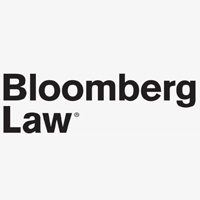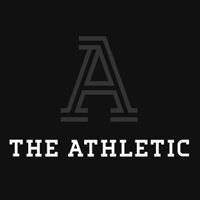Media Watch
Green Hydrogen Backers See Big Chance for Sector Development
Bloomberg Law -
A third lever Biden could pull would be to create infrastructure that can move hydrogen, perhaps by repurposing the existing natural gas system, said Jack Brouwer, director of the National Fuel Cell Research Center at the University of California, Irvine.
“This is what the federal government should be responsible for doing,” Brouwer said. “This is a shared infrastructure. It enables long-duration storage, it lets you transmit it across mountains—it’s got a lot of features that we like.” Read More
Find Out Who Received a 2021 IEEE Major Award
IEEE News -
Chin C. Lee, [Professor Emeritus, engineering], University of California, Irvine, “For contributions to new silver alloys, new bonding methods, flip-chip interconnect, and education for electronics packaging.” Read More
'Snow Droughts' Increasing in the Western U.S.
EcoWatch -
"The common ways to measure droughts are through precipitation, soil moisture and runoff," says Laurie S. Huning, an environmental engineer at the University of California, Irvine. Her most recent work adds another dimension to that by looking at water stored in snowpack. Huning is the co-author of a study in the Proceedings of the National Academy of Sciences, with UC Irvine colleague [Engineering Professor] Amir AghaKouchak, which developed a new framework for characterizing "snow droughts." These can occur when there's an abnormally low snowpack, which may be triggered by low precipitation, warm temperatures or both. Read More
With Natural Gas in Peril, Pipeline Owners Look to Hydrogen
Yahoo Finance (Bloomberg) -
“We must investigate this for every single pipe we put hydrogen into,” said Jack Brouwer, director of the advanced power and energy program at the University of California, Irvine, “but it’s a phenomenon we can manage because it’s slow.” Problem pipes and compressors could be replaced over the course of years, he said. Or pipes could be protected with coatings applied from the inside by robotic devices called pigs that are currently used for pipeline inspection and maintenance. Read More
Hydrogen advocates look to capitalize on California's goal to replace diesel for back-up generation
Utility Dive -
The key draw of hydrogen is its cost-effectiveness at longer durations. For a completely resilient, 100% renewable data center with zero emissions, using hydrogen would translate to a levelized cost of electricity amounting to $119 per MWh, said Jack Brouwer, a professor of mechanical and aerospace engineering at the University of California, Irvine. … "Lithium-ion batteries are cheaper for short-duration storage, and they're more efficient. But eventually, when you have longer amounts of storage duration required, there will be a crossover point," where hydrogen becomes cheaper, Brouwer said. Read More
Local vibrational modes measured at individual crystalline faults
Spectroscopy -
Employing newly developed electron microscopy techniques, researchers at the University of California, Irvine (UCI) and other institutions have, for the first time, measured the spectra of phonons at individual crystalline faults, and they discovered the propagation of phonons near the flaws. “Point defects, dislocations, stacking faults and grain boundaries are often found in crystalline materials, and these defects can have a significant impact on a substance’s thermal conductivity and thermoelectric performance”, said senior co-author Xiaoqing Pan from UCI. Read More
What is ‘seam-shifted wake’ and which pitchers benefit most from it?
The Athletic -
Professor of electrical engineering and computer science at the University of California, Irvine Glenn Healey, tried to separate out each of the measurable forces on the baseball so that only the seam-shifted effect would remain. … He found that the effect was largest on sinkers and changeups—the two pitches in baseball that have seen the largest drop in usage over the last few years, coincidentally—and provided a list of pitchers that saw the most “side-force” effect in 2020. [Subscription required, you can request an electronic copy of the article by sending an email to communications@uci.edu.] Read More
We need better face masks—and origami might help
National Geographic -
Materials that are more readily available to the public can also be effective for some folded mask designs, says Jonathan Realmuto, a postdoctoral researcher at the University of California, Irvine. For example, non-fiberglass MERV-13 filters, which are commonly used for heating, ventilation, and air conditioning systems, are particularly effective and available at most hardware stores. … A pattern developed by UC Irvine's Realmuto and his colleagues was designed to be made in emergencies using readily available items. The folds, he says, limit leakage along the mask seams. Read More
Drastic changes ahead for the Earth’s tropical rain belt
Earth.com -
As Earth’s temperatures continue to rise, the tropical rain belt is expected to make a permanent shift to the north. A new study from UC Irvine confirms that climate change will alter the position of the rain belt, but reveals that the changes will be regionally inconsistent. … “This study combines the engineering approach of system’s thinking with data analytics and climate science to reveal subtle and previously unrecognized manifestations of global warming on regional precipitation dynamics and extremes,” said study co-author Professor Efi Foufoula-Georgiou. Read More
Climate Crisis Will Shift Tropical Rain Belt and Create Food Insecurity for Billions, Study Finds
EcoWatch -
A study published Monday found billions more could face food insecurity as Earth's tropical rain belt shifts in response to climate change, causing increased drought stress and intensified flooding. … The rain belt is projected to shift toward a warming atmosphere, co-author James Randerson, UCI's Ralph J. & Carol M. Cicerone Chair in Earth System Science, explained. "In Asia, projected reductions in aerosol emissions, glacier melting in the Himalayas and loss of snow cover in northern areas brought on by climate change will cause the atmosphere to heat up faster than in other regions," he told UCI News. Read More









